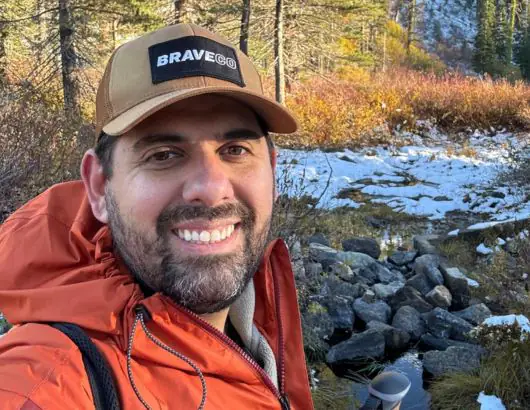The first thing you notice is the sound. Not of bobcats or concrete saws, but of sprinklers—five of them—arcing over the empty blue basin like a slow‑motion encore. The house is in East Boca, the pool a rectangle that has seen better decades, the owners a young family watching their toddlers ignore the water and run to the patch of grass that doesn’t yet exist.
“We’ll just fill it,” the husband says one Saturday. “It’s just a hole.” It always starts that way: a simple plan, a phone call for a truckload of fill, and a weekend of work to reclaim the yard.
Then the second thing you notice is the paper. A neighbor mentions the City. A friend mentions the HOA. Someone whispers “permit,” and the homeowners do what people do in the age of search: they type do you need a permit to fill in a pool and wait to be told no. The internet does not tell them no.
Florida’s rulebook is deceptively simple. Our statewide building code opens with a single sentence that changes every “it’s just dirt” plan: if you intend to construct, enlarge, alter, repair, move, or demolish a building or structure, you must obtain a permit. A swimming pool is a structure. Filling it in is demolition. That means yes—you need a permit—not because City Hall loves paperwork, but because future ground doesn’t forget past holes. The 2023 Florida Building Code, Section 105.1, is unambiguous on that point. ICC Digital Codes
What happens after that sentence is where South Florida becomes South Florida. Palm Beach County publishes a demolition bulletin that spells it out without drama: a demolition permit is required for any structure that needed a permit to be built—“this includes…swimming pools.” In other words, the public record that once said “pool” will not erase itself; it takes a permitted act to undo a permitted act. Palm Beach County
Miami says it even plainer. If you’re removing a structure—home, accessory building, or part of one—you need a demolition permit, and only a qualified licensed contractor can pull it. For a pool that will be filled instead of rebuilt, that same logic applies. The City will want to know what you’re doing, how you’ll do it, and that the ground you leave behind will behave like ground. Miami Government

Those who have never watched a pool come out imagine the work as a one‑act play: drain, dump, tamp. In real life the plot is slower and more meticulous, because the permit exists to answer four questions only time can answer poorly: Where will water go? Where will load go? Where will utilities go? And how will the record show what you did?
A shell is a bowl; if you fill a bowl with dirt without first giving it a throat, water stays where you don’t want it. That’s why local jurisdictions insist on breaking holes in the pool bottom before backfill—openings at low points that keep groundwater from turning your future lawn into a sponge. In Broward County’s Lauderdale Lakes, the written requirement is explicit: cut two‑foot square openings at the low points, remove the coping and at least 12 inches of the wall below grade, do not use broken concrete as fill, and compact in lifts to 90%—a construction‑grade instruction set for what may look like yard work from the sidewalk. The City’s last line is the quiet clincher: don’t build over the filled area without a soils engineer’s sign‑off. The permit isn’t pedantic; it’s a paper trail against future settlement and surprise. Lauderdale Lakes
Compaction is how you convince the future not to sag. That’s also why some cities require a geotechnical letter if you plan to place patios, rooms, or heavy landscaping over the former pool. The absence of this step is what makes driveways buckle and screen rooms crack a season after the celebration photo.
The pool was plumbed, wired, and possibly piped for gas. Cap, remove, or re‑route those lines with their own trade permits, and call Sunshine 811 to mark underground facilities at least two full business days before excavation. Cutting blindly into a yard that’s been feeding power to a pump and heat to a heater is as dangerous as it sounds—and it’s illegal to dig without notifying 811 statewide.
A permitted fill changes three facts about your home: the building record (a pool is no longer present), the as‑built reality (future buyers know what the soil is), and the risk profile (you didn’t bury a hazard in place). Without a permit, you’re left with a set of photos and a story no official has agreed to believe. When the next person asks do you need a permit for a pool removal, they’ll be asking about your house.

South Florida’s cities don’t copy each other’s webpages, but they rhyme in practice. Boca Raton publishes the standard pool checklist for building a new pool—survey, plans, barrier compliance, licensed contractor—which is useful here for contrast: The City expects rigor for the pool going in, and the same level of rigor for a pool coming out through its demolition pathways and forms. My Boca+1
Delray Beach is even more direct by name: their permit library includes a “Pool Demo/Backfilling Swimming Pool Affidavit,” which does exactly what it sounds like—ties the act of filling to an affidavit and a permit record so your yard doesn’t become a mystery for the next owner.
Broward County puts the policy in a single sentence for its territories: a permit is required to construct, enlarge, alter, move, remove, or demolish any…structure or part thereof. Cities under Broward’s umbrella add their own specifics, like Fort Lauderdale’s demolition checklists and Lauderdale‑by‑the‑Sea’s forms that reinforce the same logic. Different headers, same story.
The constant through all these examples is that “fill” is an act of demolition, not a landscaping trick. Which brings us back to the language of the state code. The in ground pool permit you needed to build is mirrored by the demolition permit you need to remove. The names change by city; the obligation does not. ICC Digital Codes
Permits are often framed as red tape; in South Florida they’re also storm insurance for your future self. Properly abandoning a pool sets up four kinds of protection you can’t get by winging it.

The unglamorous truth of this work reads like a checklist, but it unfolds like a week with an attentive contractor.
1. you (or we, if you hire us) confirm the address falls outside special coastal lines or flag them early if they apply.
2. A licensed contractor pulls the right pool permit variant—demolition, abandonment/backfill, or a general demolition with trade sub‑permits for electric and gas—under the city’s e‑permitting system.
3. Notice of Commencement is recorded and posted (Broward’s forms remind owners that jobs $5,000 and up require it before the first inspection).
4. Sunshine 811 is called, locates are marked, and utilities are killed where needed.
5. Drain the shell, cut the drainage openings, remove coping and the top 12–24 inches of wall where required, and clear the accessories and lines.
6. Then come the rock, the lifts, and the compaction.
7. When inspectors sign off on the in‑progress and final, you’re left with ground that acts like ground.
Every city puts its own veneer on the same bones. Boca hosts the forms and pool safety affidavit; Delray posts the pool demo/backfill affidavit by name; Miami’s demolition pages make clear that demolition requires a permit and must be pulled by a qualified contractor. The county pages reinforce the idea that removing a pool is a demolish/abandon matter, not a landscaping decision. Palm Beach County+3My Boca+3Delray Beach+3
Myth 1: nobody will notice.
Myth 2: Even if they do, the fix is just a fine. In Florida, permitting is backed by the power to stop work, and unlicensed or unpermitted activity can stall a project mid‑dig. The state’s contractor statute authorizes stop‑work orders for unlicensed work; cities can red‑tag jobs that jump the gun. A weekend of “just fill it” can turn into a month of opening what you thought you’d closed. Florida Senate
Myth 3: Rubble is fill. It isn’t—at least not the way most homeowners use it. Municipal guides like Lauderdale Lakes’ forbid broken pool concrete as backfill and require compaction to 90%. Tossing shattered shell into a hole is how you guarantee air pockets and later settlement. The permit is the device that stops you from getting clever with physics. Lauderdale Lakes
Myth 4: Pool permit is only for building. If you’re searching do you need a permit for a pool because yours is old and you want it gone, you’re still in permit land. Different form; same principle; less drama later. Cities call it demolition, abandonment, or backfill. The result is the same: the record matches reality. ICC Digital Codes
The homeowners in East Boca get their answer. It isn’t that government is allergic to lawns; it’s that ground keeps history, and responsible cities force you to write the last chapter cleanly. A pool permit to build is matched by an end‑of‑life permit to demolish or abandon. The formality is not formality for its own sake. It is how the earth under your swing set will behave in a thunderstorm in 2027.
So, do you need a permit to fill in a pool in South Florida? Every meaningful source––from the Florida Building Code to Palm Beach County’s demolition policy, from Miami’s demolition page to Broward’s municipal guidelines—says yes. The names on the forms may vary; the answer does not. Lauderdale Lakes+3ICC Digital Codes+3Palm Beach County+3
There’s a way to trade that concrete rectangle for grass without inheriting a mystery. It begins with a conversation, not a truck. At Epic Watershapes, we handle both sides of pool life: the high‑design builds and the quiet goodbyes.
If your path is removal, we’ll verify jurisdiction, pull the correct permit, coordinate Sunshine 811, sequence the trade permits, cut and expose the shell per local specs, compact lifts to spec, and close the permit with in‑progress and final inspections. You get a yard that acts like a yard—and a record that proves it.
Call to action: Ready to reclaim your yard the right way? Book a free estimate visit with Epic Watershapes. We’ll confirm your city’s requirements, outline costs and timing, and give you a clean plan—from permit to final grade—so the only surprise is how much you like your new lawn.
Thiago Machado is a co‑owner of Epic Watershapes, the Boca Raton firm trusted by South Florida homeowners who want custom pools delivered with craftsmanship and calm. Over more than a decade in the home‑improvement industry, Thiago has been the behind‑the‑scenes force for several Florida growth stories—building teams, tightening operations, and elevating client experience. Today he brings that same rigor to every phase of pool building, from early design and permitting to finish selection, start‑up, and owner handoff.
Thiago believes great watershapes earn their keep for years: they’re beautiful, durable, quiet to run, and effortless to live with. His approach pairs transparent schedules with meticulous site management so clients enjoy the process as much as the final reveal.
When he’s off the clock, Thiago dedicates time to his family, friends, and faith. He’s also an avid outdoorsman who loves hiking, fishing, and—whenever travel allows—snowboarding.
